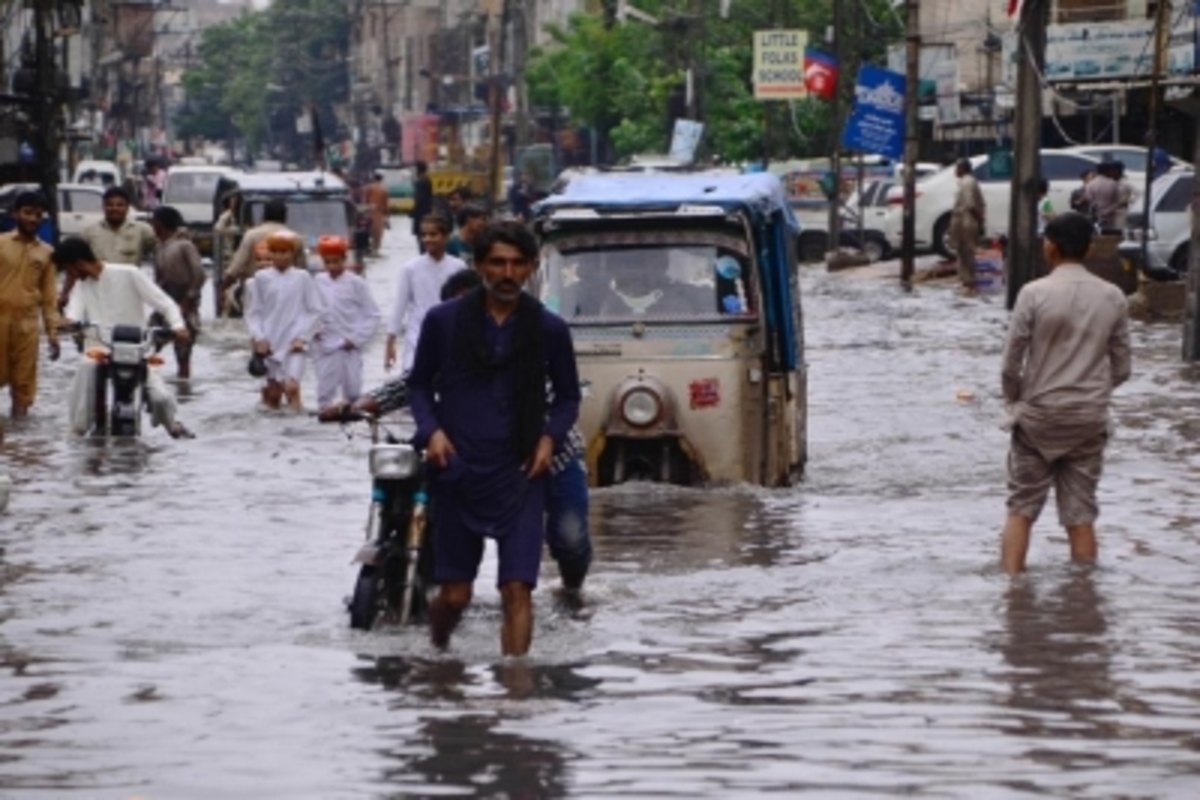CT 2025: Pakistan trolled as India win means Lahore will not host final
This has resulted in Indian fans trolling Pakistan on social media, making fun of the hosts missing their own party.
Should we build embankments so close to rivers that they do not have the space needed to deposit silt and replenish ponds or recharge groundwater?

Pakistan floods: Infectious diseases kill nine people in Sindh in 24 hours
While the need for evolving a comprehensive and balanced flood protection policy has always been there, this need has become pressing in times of climate change when much heavier rain spells and higher flood flows are being seen. A balanced flood policy can contribute both in the short run and in the long run to considerably reduce the damage from floods and reduce their more destructive impacts. Sometimes a line is drawn between the ecological and engineering approaches to flood control. However, while drawing up a comprehensive policy, we need to look at both aspects. Coming to ecological aspects, there is no doubt that we need to considerably increase the green cover, particularly in the hilly and catchment areas. The Himalayan region is of the greatest importance. We should not make the mistake of confusing the commercial plantations and monocultures as forests.
We should try to protect all remaining natural forests and revive natural forests in degraded areas, all this with the cooperation and involvement of locals. Where new forests are being created, we should try to imitate native natural forests to the extent possible. We human beings may not be able to equal the ingenuity of nature, but we can try to come close to it. Flood waters have been generally best handled in the past by allowing them to spread considerably in the flood plains in such a way that large parts of them find their way to ponds, lakes, tanks, and wetlands. This way depleted water sources are filled up and there is significant recharge of groundwater which will help us during the dry months, while at the same time the immediate danger is reduced. For this to happen, these water bodies must be safe and secure, free from encroachments, ready to welcome and absorb the flood water.
Advertisement
In all construction and development works, drainage should get adequate attention and no final approval or final payments should be granted till the drainage component has been properly completed. More problems arise if the flood waters stay on for a long time due to drainage obstruction and fewer problems are seen if the flood waters leave quickly. A guest is considered a good guest if she or he does not overstay and leaves behind a gift or two. If a flood leaves rather quickly after depositing some fertile silt and replenishing the drying water bodies, then it is a good flood. It is therefore important that we create the conditions in which a flood can become relatively good, or at least not such a bad flood. The most common way of controlling floods has been to build embankments. But we cannot go on building embankments along all rivers. We must be selective and learn from experience which can warn us of several possible mistakes. Should we build embankments so close to rivers that they do not have the space needed to deposit silt and replenish ponds or recharge groundwater?
Advertisement
The answer must be in the negative. But if the embankments are to be built some distance away, we must have the will and the resources for the proper care and rehabilitation of people in areas between the river and the embankment. At best embankments have only a limited role and a wise engineer will learn to be selective, knowing where to build and where not to build. We cannot look only at immediate protection. We must consider what happens after five or ten years. We should not forget that when breaches occur in embankments, the floods unleashed can be much more destructive. What we should always remember is that in several areas where many embankments have been built, flood damage is still heavy and perhaps heavier than before. Without resolving this contradiction, we cannot go on building more embankments. A lot of money in the name of flood control has been spent on dams, but again we must reckon with the difficult fact that many destructive floods are being caused by very heavy release of dam waters.
To reduce such possibilities, flood reduction should receive more importance in dam management. Secondly, steps to check rapid siltation of dam reservoirs should be taken. Dam safety and safe management practices should get more attention. Beyond this, there is a need to reconsider several adverse impacts of damming rivers as adequate caution has not always been exercised by quickly approving hazardous projects that may pass the scrutiny of an honest cost-benefit appraisal. In urban areas, the tendency to encroach on riverbeds, and/or on natural waterways, for various construction activities must be checked. The clearing of drains must be better, and garbage which clogs drains and obstructs water flow must be minimized.
We must realize that floods have always been with us and will always be with us, particularly in those countries where rain tends to be concentrated in a relatively short season of three or four months. The challenge is to handle them in ways which will make them less destructive while enjoying their bounty of water recharge and fertile silt deposition.
A version of this story appears in the print edition of the September 1, 2022, issue.
The writer is Honorary Convener, Campaign to Save Earth Now. His recent books include A Day in 2071, Planet in Peril and Protecting Earth for Children.
Advertisement